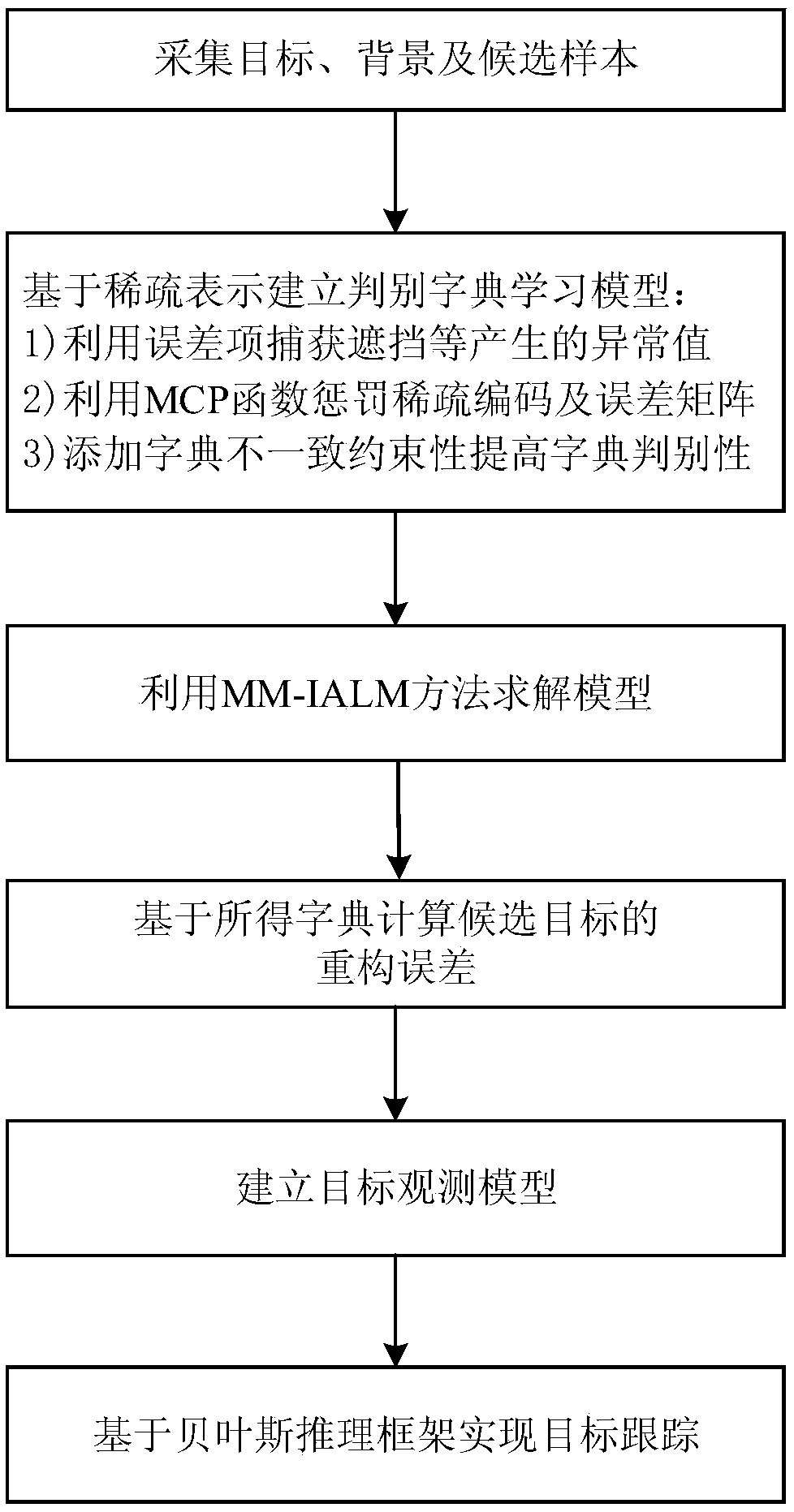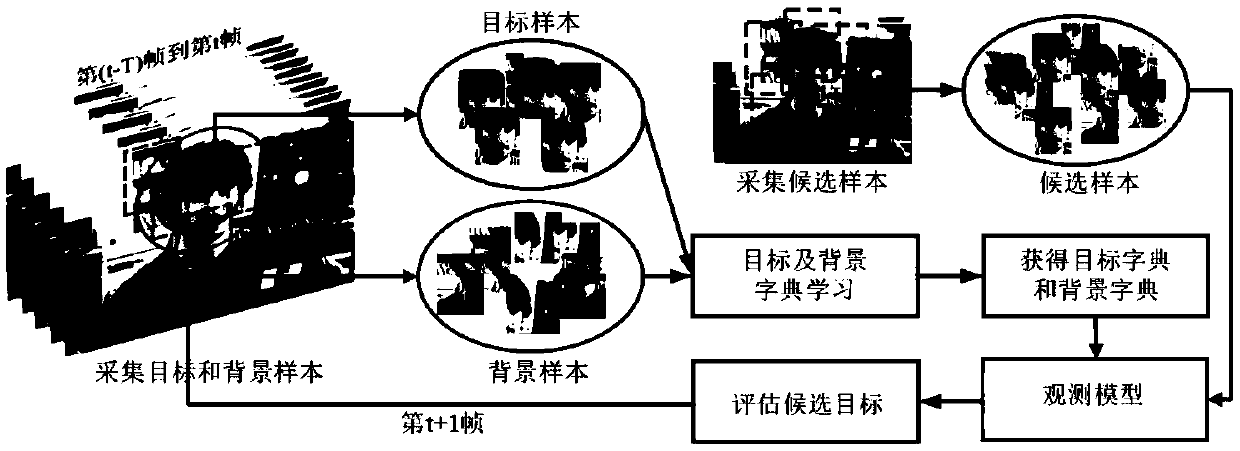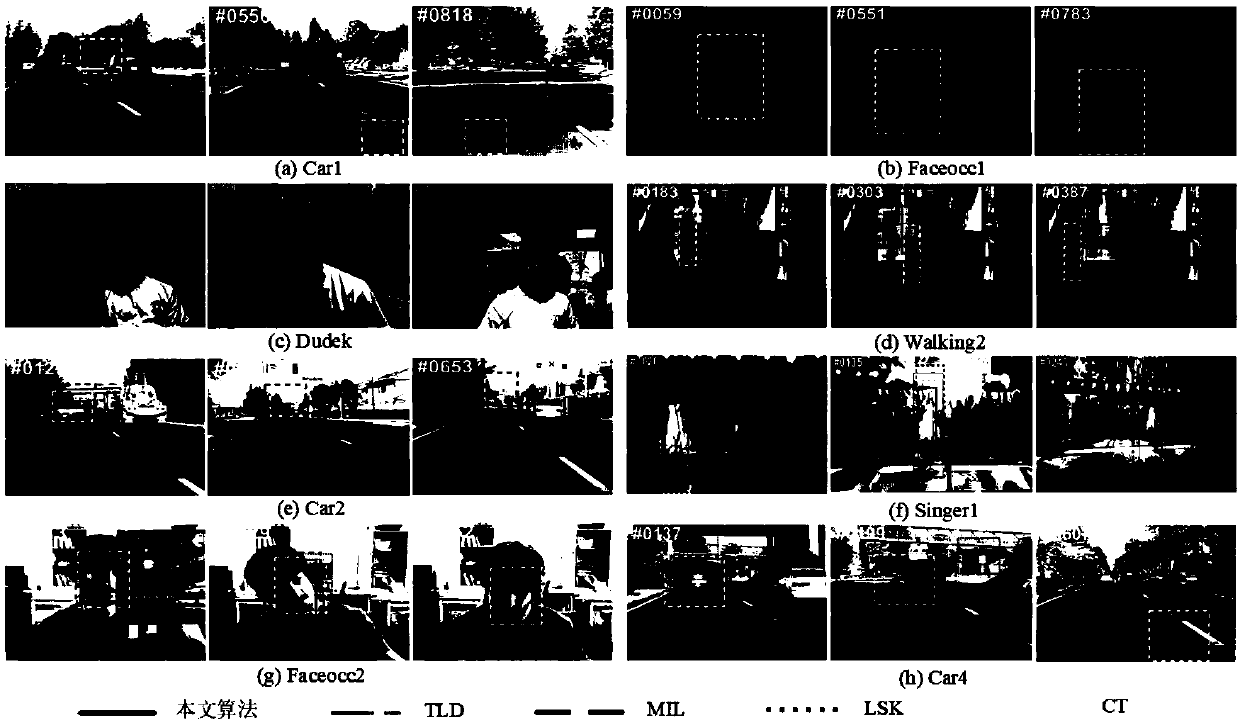Visual tracking method based on discriminant dictionary learning
A dictionary learning and dictionary technology, applied in the field of computer vision, can solve problems that have not been effectively applied in the field of visual tracking
- Summary
- Abstract
- Description
- Claims
- Application Information
AI Technical Summary
Problems solved by technology
Method used
Image
Examples
Embodiment Construction
[0094] The implementation steps of the present invention will be further described in detail below in conjunction with the accompanying drawings and specific implementation methods. Such as figure 1 Shown is a flow chart of the present invention. Including the following steps:
[0095] 1. Initialization
[0096] Manually select a rectangular area to obtain the target in the first frame, using l(x,y) * Indicates the center of the resulting rectangular area, in Sampling in the range to get q 1 image blocks as target samples, where l i Indicates the center of the i-th image block, and r indicates the radius of the circular area. Similarly, in Sampling in the range to get q 2 image blocks as background samples, where l j Indicates the center of the jth image block, and R indicates the radius of the outer ring. A number of target and background samples are randomly selected to form the initial target and background dictionaries respectively. The sparse coding matrix an...
PUM
 Login to View More
Login to View More Abstract
Description
Claims
Application Information
 Login to View More
Login to View More - R&D
- Intellectual Property
- Life Sciences
- Materials
- Tech Scout
- Unparalleled Data Quality
- Higher Quality Content
- 60% Fewer Hallucinations
Browse by: Latest US Patents, China's latest patents, Technical Efficacy Thesaurus, Application Domain, Technology Topic, Popular Technical Reports.
© 2025 PatSnap. All rights reserved.Legal|Privacy policy|Modern Slavery Act Transparency Statement|Sitemap|About US| Contact US: help@patsnap.com



